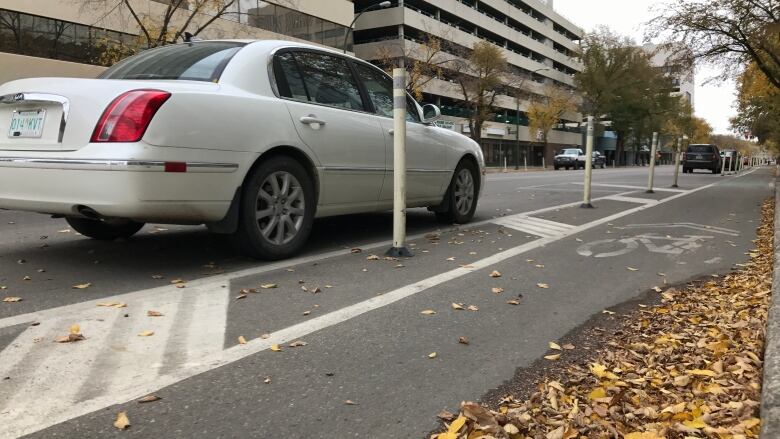Downtown bike lanes block way for disabled people: safety group
Saskatoon and District Safety Council calls on city councillors to change design of lanes

The future of downtown Saskatoon's protected bike lanes is still up in the air. But one group says their design needs to changeif the lanes are here to stay.
The Saskatoon and District Safety Council says the lanes on 4th Avenue and 23rd Street make it difficult for people using wheelchairs and other mobility aids to reach the sidewalk.
The council's media relations officer, Al Reichert, offers some examples.
"I have a son who has MS. He uses a walker, and when you park beside the bicycle lane, he has to get out into the bicycle lane, which is very dangerous because he has to use his walker and lift it up to get onto the sidewalk.
"Another one of our members has a family member in a wheelchair, and that's worse because you can't get up the sidewalk."
'Just about lost my door'
Further complicating matters, people who are coming out of their parked cars can come in the crosshairs of "bicycles coming from both directions," he added.
"I just about lost my door one day."
The safety council has written Mayor Charlie Clark and all city councillors about its concerns. Reichert says he's also raised the issues with his councillor, Ward 7 repMairin Loewen.
Cathy Watts, the co-chair of biking advocacy group Saskatoon Cycles, said she has "tremendous sympathy" for the safety council's comments.
"I also believe that good design to accommodate all users is possible," said Watts via email. "Many cities have solved this problem in the past several years as protected bike lanes are becoming part of progressive cities all across North America."
Switching sides
The safety council has a specific suggestion, which essentially involves a do-si-do.
"Double the width of the sidewalk so that cars can park up to it and people who are using conveyance appliances like walkers and wheelchairs can get out onto the sidewalk," explained Reichert.
"[Then] have the sidewalk divided with posts like they've got on the street right now to keep the cars away from the bicycle lanes and make the bicycle lanes on the inside and then the cyclists have their own lane but people can still unload out of the vehicles and get up on the sidewalk."
A letter outlining the safety council's concerns will be presented to the city's accessibility advisory committee which includes two city councillors and five caregivers or people with disabilities later this week.
The city will be presenting councillors with a report on the future of the bike lanes before the end of the year. About 300 cyclists a day were using the lanes as of the spring, according to the city.












_(720p).jpg)


 OFFICIAL HD MUSIC VIDEO.jpg)
.jpg)



























































































